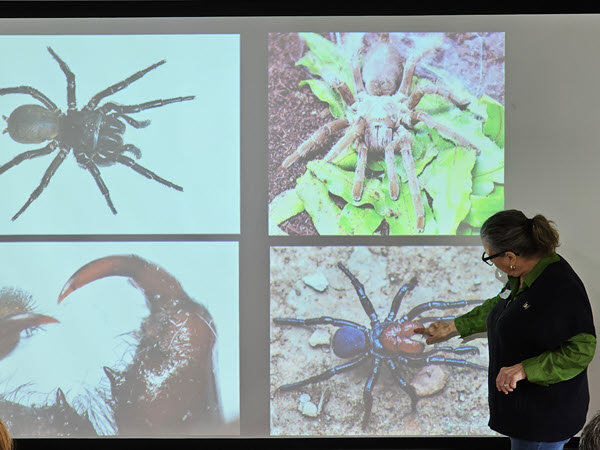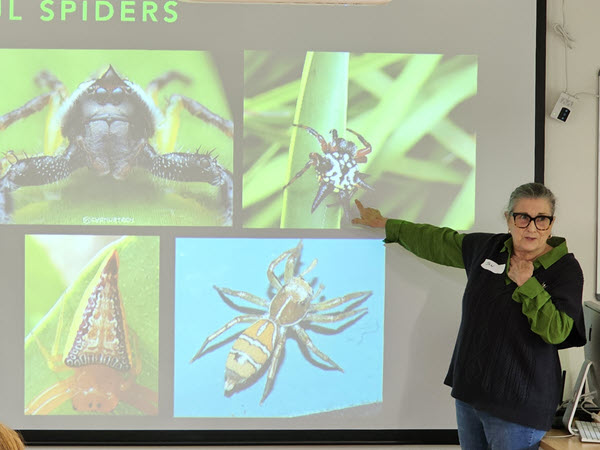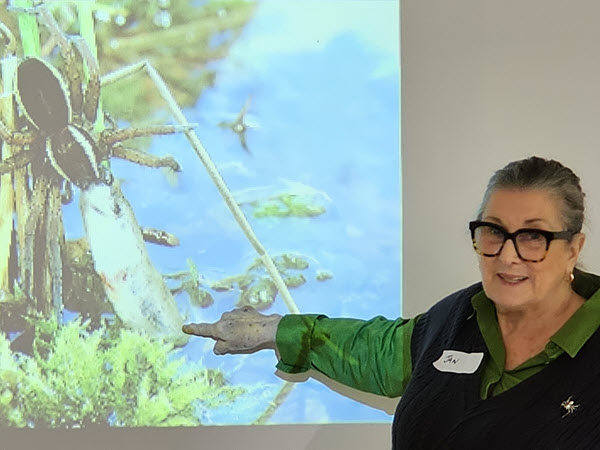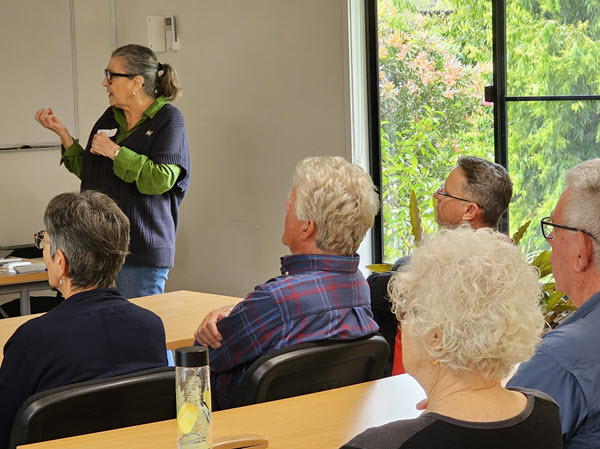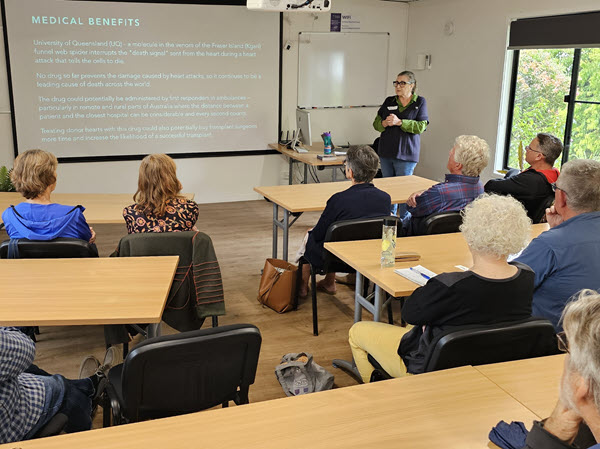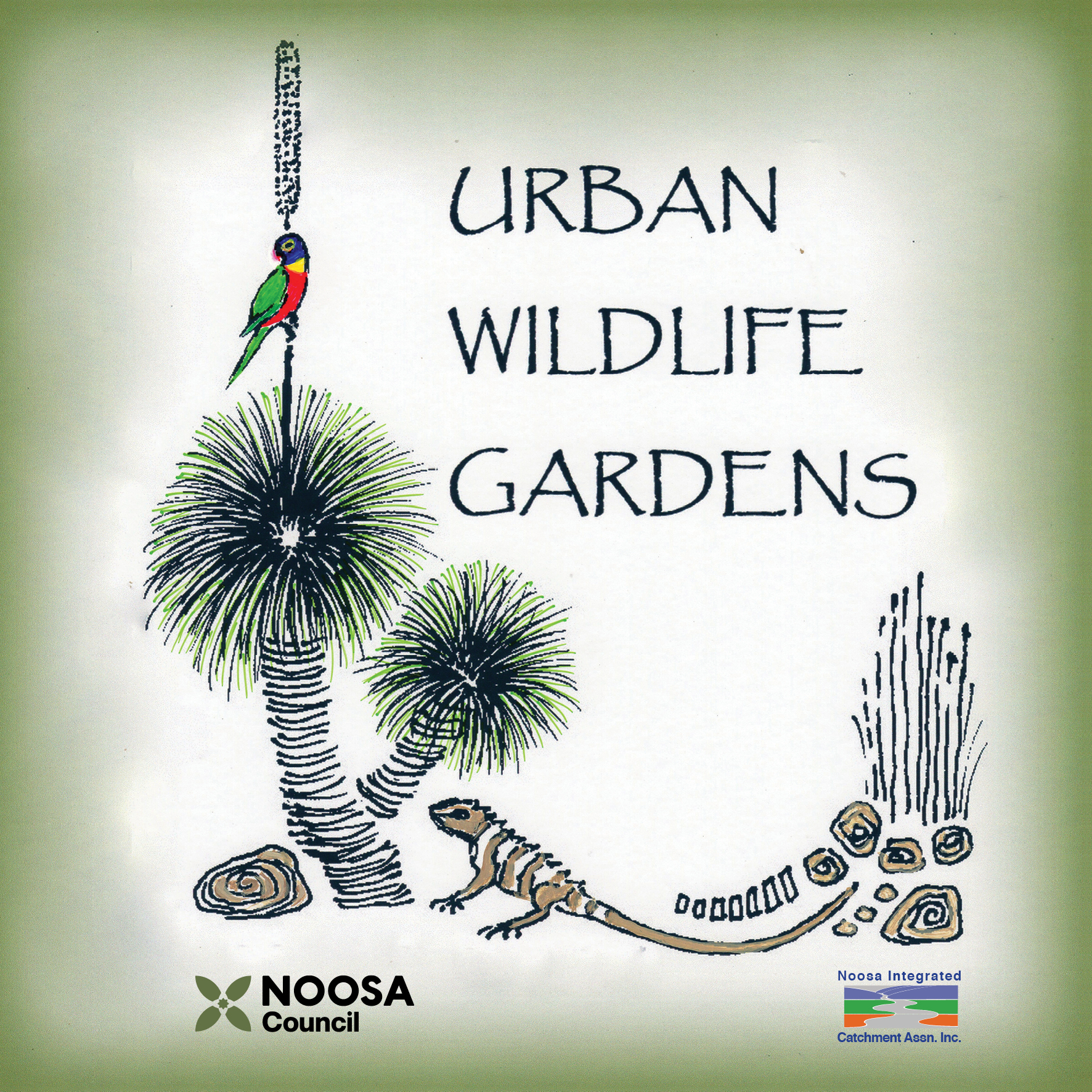Dr Jan’s opening comment was how passionate she was about spiders, so it was a surprise to hear that she was an arachnophobe as a young girl. She told of an instance when her father tucked her under her mosquito net tightly, only for her to realise a minute later that a rather large huntsman was above her inside the mosquito net. Her blood curdling scream certainly alerted her dad something wasn’t right.
Years later and with the help of a wonderful lecturer at ANU, her love of spiders began.
Spiders have been around for millions of years and there are around 40,000 named species in the world. Australia has high spider diversity with over 10,000 named species.
Spiders have 8 legs and 2 body parts whereas insects have 6 legs and 3 body parts. Some spiders prey on ants, these are called mimics, they look like they have 3 body parts just by their evolutionary development and, because they look like ants, they can get into most ant nests.
We learnt why spider webs stick to you. Spider webs are a series of wound up coils which, when the insect hits the web, uncoil then come back and wrap around the insect.
Dr Jan spoke of spiders eating a lot of food. In fact, as a group, they are the third-largest meat-consuming animals on the planet behind humans and whales.
Mygalomorphs such as funnel web spiders, trap doors and mouse spiders have fangs pointing down. When they raise up and bring their fangs down, they can even pierce a toenail or a fingernail. The strength of the fang and of the spider surprised many of us in the audience. Araneomorph spiders, such as the huntsman, have fangs like pincers which move side to side like a pair of scissors so are not as strong as the Mygalomorphs.
Spiders have eight eyes and hunting spiders have the biggest eyes. One hunting spider, the net casting spider, comes out at night and makes a small web in the form of a net which it holds between its front legs. This net can be stretched out to catch insects so when the spider sees an insect with its huge eyes, it quickly grabs it.
Spiders are the most widely distributed venomous species in Australia although there are more deaths from allergic reactions to bees than spiders. No-one has died from a spider bite since 1981, the year antivenom for funnel webs became available. Antivenom has been available for redbacks since the 1950’s. Dr Jan related the story of a friend who got bitten by a redback. Although the bite was extremely painful her friend survived with no ill effects. Antivenom for redbacks is only used when the bite is very severe.
Dr Jan tells us she has been involved in the harvesting of funnel web spider venom in Kgari to use in research to develop a drug to treat heart attack victims and protect donor hearts. I for one, was unaware there were even funnel web spiders on Kgari. It was very interesting research indeed.
Lastly, the preferred habitat of spiders is found throughout ecosystems. Most spiders are generalists and will eat anything but if no insects are around, they will eat each other. They are very effective predators in agro-ecosystems and in garden ecosystems so by not spraying you’ll keep the spiders and have less pest insects. Spiders won’t eat fungi and most don’t eat things like aphids, but they will eat the bigger pest insects so, as Dr Jan says, spiders are good to keep around.
The interest in spiders was evident at the end of the session with attendees asking Dr Jan a variety of questions. This was then followed by a very pleasant morning tea where the discussions continued.
It was a very pleasant morning learning about all things spiders with Dr Jan Green.
